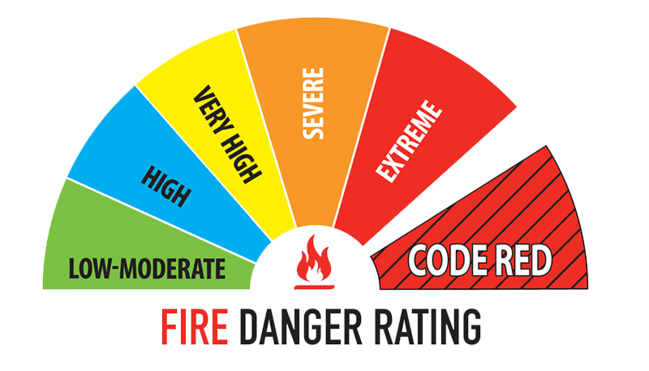Fire danger ratings to change in Victoria ahead of 2022-2023 fire season
The way fire danger is classified is being changed ahead of the upcoming fire season. Find out why.
Leader
Don't miss out on the headlines from Leader . Followed categories will be added to My News.
Victoria’s fire danger system will be overhauled from next month, to be in line with other Australian states and territories.
‘Code Red’, a danger level implemented after the Black Saturday fires which claimed 173 lives, will disappear.
Instead, ‘Catastrophic’ will become the highest risk category on signs around the state.
The changes will see the state’s current six-tier fire danger rating system streamlined to four risk levels with clearer actions for communities to follow when an alert is issued.
The implementation of the Australian Fire Danger Rating System (AFDRS) will create a “more scientifically accurate and nationally consistent system” to enable improved decision making by communities, agencies and industries, the Country Fire Authority’s Deputy Chief Officer Alen Slijepcevic says.
He told Leader there were several reasons the system was changing, including that the current system was outdated.

While there have been some improvements over time, the current McArthur system was designed in the 1960s and does not take scientific advances or knowledge gained in the last six decades into account.
Based on two fire behaviour models – forest and grass – it uses the Forest Fire Index (FFI) and Grass Fire Index (GFI) to form a Fire Danger Rating.
Though inclusive of only two vegetation types, it does not represent all of the country’s diverse ecosystems or current fuel states.
The new system, AFDRS, comprises better data, updated science and the latest fire behaviour prediction models for eight different vegetation types.
It has also been built so it can be continuously updated with the most up-to-date scientific information.
While danger ratings were amended after Black Saturday, the new system will simplify the ratings to moderate, high, extreme and catastrophic, with the latter to be reserved for days like Ash Wednesday or Black Saturday.
Specific actions will be attached to each rating, including ‘plan and prepare’, ‘prepare to act’, ‘take actions to protect life and property’ and ‘leave for survival’.
An overall clearer and nationally consistent system, Deputy Chief Officer Slijepcevic said it would mean Australians would know what to do no matter where they were.


The system will begin rolling out in Victoria from September 1, with all current signage and educational materials to be replaced.
It’s not clear how much it will cost to replace all the signage.
With above-average rainfall expected in spring and an average fire season expected for 2022-2023, it is hoped authorities will be able to transition smoothly.
But Deputy Chief Officer Slijepcevic stressed that it only took one day for a fire season to become catastrophic, even in an average or below average fire season, so having fire plans in place was crucial.
Building on the new system, the NSW Rural Fire Service and the Bureau of Meteorology are also researching new ways to support fire danger prediction.
This includes the likelihood of a fire starting, the ability to suppress a fire if it does start and the impact of fire if it spreads beyond suppressibility.
The latter will look at the scale of damage – from human life and property to critical infrastructure, biodiversity, water yield and quality to secondary and tertiary impacts such as the impact of smoke on community health and longer-term impacts to certain industries.
“Over time we will collectively build a very sophisticated system,” he said.




